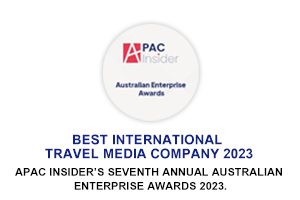Coffee, a beloved and increasingly popular beverage in today’s world, transcends mere refreshment. Whether sipped in the comfort of one’s home, savoured in the bustling workplace, or shared during social gatherings, coffee has woven itself into the fabric of modern life. This has given rise to a unique coffee culture characterized by specialty brews, artisanal shops, and enthusiasts eager to explore the depths of flavour.
Amidst the sea of disposable coffee cups, a detail often overlooked is the triangular symbol and number adorning their lids. To many, these markings remain enigmatic. Yet, these seemingly inconspicuous symbols carry significant implications for our health and the environment. They guide us on how to handle the cup – whether it’s recyclable, compostable, or destined for the landfill. In an era where sustainability is paramount, understanding these symbols becomes essential, as they play a role in reducing waste and conserving resources for future generations.
-
Understanding the Triangular Symbol and Number on Coffee Cup Lids
The triangle symbol, commonly found on packaging, plays a crucial role in environmental awareness. It functions as a clear indicator, distinguishing recyclable cups from those produced using recycled materials. Within this symbol, a number is prominently displayed, effectively serving as a plastic “identity card.” These numbers are vital for categorizing plastics, signifying their unique properties and composition. This system facilitates recycling processes by helping consumers and waste management facilities correctly identify and sort the various plastic materials, contributing to a more sustainable and efficient recycling ecosystem.
– PET (polyethylene glycol terephthalate) is a widely used plastic for mineral water and carbonated beverage bottles. Its heat resistance extends to around 70°C, making it suitable for storing hot liquids briefly, but it’s not recommended for acidic or alkaline beverages due to the risk of chemical interactions.
–HDPE (high-density polyethylene) is commonly found in pharmaceutical packaging, cleaning products, and bath items. However, it’s not ideal for use in water cups as it might not withstand the high temperatures and could affect the taste of the water.
-PVC (polyvinyl chloride) is used less frequently for food packaging because it can release toxic substances when exposed to heat. It’s more commonly associated with plumbing and construction materials.
-LDPE (low-density polyethylene) is the material of choice for plastic wrap and film thanks to its flexibility and sealing properties. Keep in mind that it’s not heat-resistant and can melt above 110°C.
-PP (polypropylene) is suitable for microwave-safe lunch boxes, as it can withstand temperatures up to 130°C, making it ideal for reheating food.
– PS (polystyrene) is used in instant noodle containers and fast-food packaging due to its lightweight and insulating properties, though it’s not a preferred choice for its environmental impact.
-Number 7 represents various plastic types, including PC (polycarbonate). These are primarily used for non-food applications like feeders and space cups, as well as in some household items. However, they can be less recyclable, and PC, in particular, has faced scrutiny for potential health concerns related to bisphenol-A (BPA). Always check labels and consider the intended use when choosing plastics for specific products.
If you spot a number 6 on a coffee cup lids, it signifies the use of PS (polystyrene). Additionally, the colour of compostable sip lids matters, with white, black, and transparent being the main options. However, black lids, often produced from scrap materials, should be avoided due to potential heavy metal content. It’s better to choose white or transparent alternatives.
-
The Hazards of Hot Coffee Cup Lids
Plastic categorization, such as Number 1 and Number 6, plays a crucial role in our daily lives, particularly when it comes to food and beverage containers. Number 6 plastic, frequently found in cup lids, can be a cause for concern. When exposed to high temperatures, it can pose potential health risks. In comparison, Number 1 plastic may warp when subjected to heat, but it generally doesn’t release harmful substances.
However, the real danger with Number 6 plastic emerges when it’s confronted with temperatures exceeding 90°C. At this point, it begins to break down into insoluble styrene. Styrene is a known irritant, capable of causing eye and upper respiratory tract irritation. Additionally, it’s classified as a carcinogen, which means it’s linked to cancer development. Therefore, it’s essential to be mindful of the type of plastic used in various applications, especially those involving heat, to safeguard our health and well-being.
-
Coffee Cup Lid Awareness
When enjoying hot beverages, opt for white cup lids and avoid black ones. Be cautious of the symbol on the lid, especially when the drink’s temperature exceeds 90°C. Minimize the use of paper cups for coffee and choose ceramic cups when possible. Ceramic cups are less likely to release harmful substances when exposed to high temperatures, making them a safer choice for health-conscious individuals. Paying attention to the symbol numbers on food containers is a small but important step toward a healthier lifestyle. Take action and make informed choices!
In conclusion, unlocking the meaning behind coffee cup lid symbol numbers adds depth to our daily coffee rituals. It’s not just a digit; it’s a story. For comprehensive insights into coffee cup lid symbols and innovative packaging solutions, contact AT PACK, the experts in the field. Sip, ponder, and explore.


















